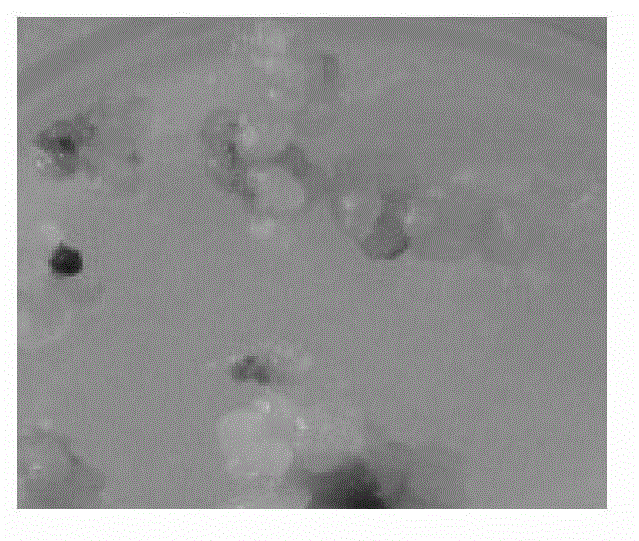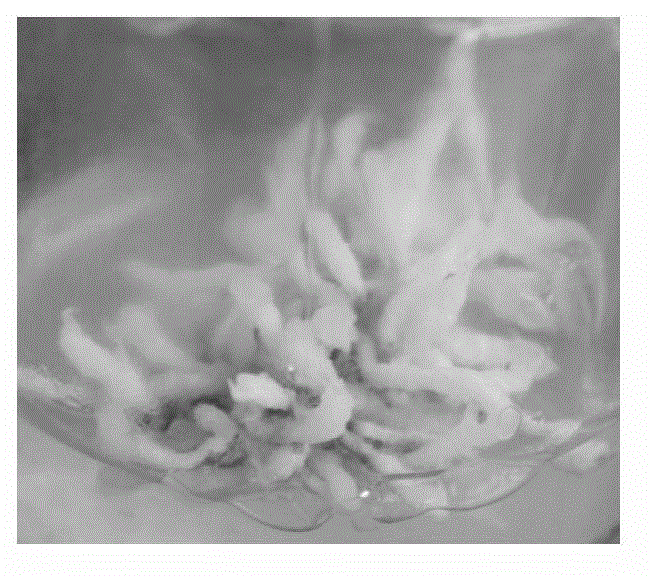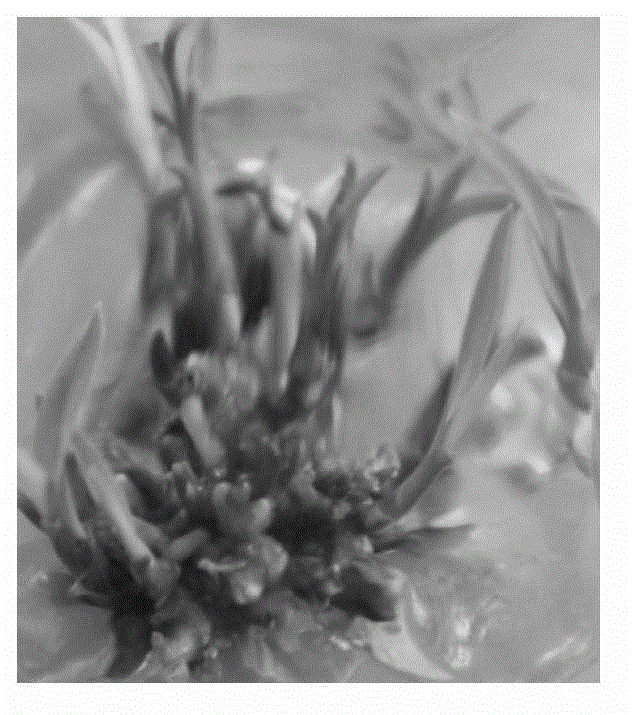Method for rapidly breeding hybrid orchid by root, as well as culture medium
A hybrid orchid culture medium technology, applied in the field of plant tissue culture, can solve the problems of not using roots as explants, difficult initial culture, complicated culture process, etc., to expand the source of explants and transplant survival rate 100%, the effect of speeding up the training process
- Summary
- Abstract
- Description
- Claims
- Application Information
AI Technical Summary
Problems solved by technology
Method used
Image
Examples
Embodiment 1
[0035] Use the root of hybrid orchid test-tube seedlings as material, cut into sections and inoculate, culture in dark at a temperature of about 25°C (25±2°C), and induce protocorms. The protocorm induction medium is MS (Murashige and Skoog, 1962)+6 -BA (6-benzylaminoadenine) 0.5mg / L+PIC (4-amino-3,5,6-trichloropyridine-2-acid) 0.6mg / L+hydrolyzed casein 200mg / L+sucrose 30000mg / L+agar Powder 5000mg / L. After 12 days, the root segment expanded and began to produce protocorms, such as figure 1 As shown, protocorms proliferated in large quantities and gradually differentiated into shoots, as shown in figure 2 Shown, protocorm induction rate 100%.
[0036] Transfer the protocorm induction medium that has induced and proliferated a large number of protocorms and sprouts to the light at a temperature of about 25°C (25±2°C). After 3 days, the protocorms and sprouts begin to turn green and gradually develop into clusters seedlings, while protocorms continue to proliferate, such as ...
Embodiment 2
[0040] Take the root of the test-tube plantlet obtained in Example 1 as material, inoculate after cutting into sections, culture in dark at a temperature of about 25°C (25±2°C), induce protocorms, and the protocorm induction medium is MS+6-BA0.5mg / L+PIC0.6mg / L+hydrolyzed casein 200mg / L+sucrose 30000mg / L+agar powder 5000mg / L, protocorm induction rate is 100%. After 30 days of culture, select the differentiated sprouts and move them to the new protocorm induction medium MS+6-BA0.5mg / L+PIC0.6mg / L+hydrolyzed casein 200mg / L+sucrose 30000mg / L+agar powder 5000mg / L Light culture, while leaving the undifferentiated protocorms on the original medium to continue to proliferate, differentiate and then transfer to light culture, and then adopt the same culture steps as in Example 1. After about 80 days of culture, each root explant has an average More than 100 plants can be induced to root.
PUM
 Login to View More
Login to View More Abstract
Description
Claims
Application Information
 Login to View More
Login to View More - R&D
- Intellectual Property
- Life Sciences
- Materials
- Tech Scout
- Unparalleled Data Quality
- Higher Quality Content
- 60% Fewer Hallucinations
Browse by: Latest US Patents, China's latest patents, Technical Efficacy Thesaurus, Application Domain, Technology Topic, Popular Technical Reports.
© 2025 PatSnap. All rights reserved.Legal|Privacy policy|Modern Slavery Act Transparency Statement|Sitemap|About US| Contact US: help@patsnap.com



